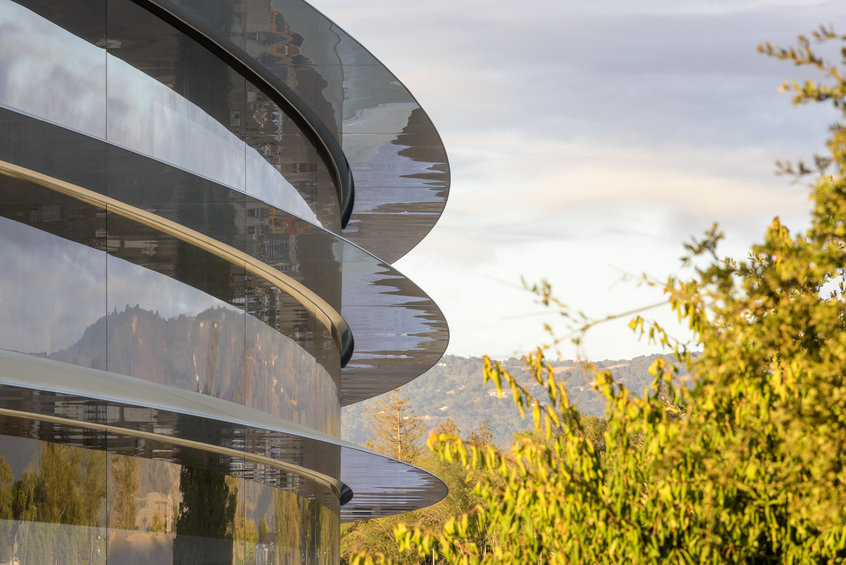Apple has announced that the first employees will move into its $5bn, 175-acre California campus in April this year.
The US technology company will move more than 12,000 workers into its Apple Park headquarters in Cupertino over the next six months, although construction of the buildings and parklands is scheduled to continue throughout the summer.
The project, designed in collaboration with UK architect Foster + Partners, was announced by Apple co-founder Steve Jobs in 2011 on his last public appearance.
The development will transform “miles of asphalt sprawl into a haven of green space” and will contain a ring-shaped, 2.8 million square foot main building clad with the “world’s largest panels of curved glass”.
The 1,000-seat auditorium, to be called “the Steve Jobs Theatre”, is described as “a 20ft-tall glass cylinder”, 165ft in diameter, supporting a metallic carbon-fibre roof.
The theatre is located on one of the highest points within Apple Park, overlooking meadows and the main building.

Apple Park will also include a visitor centre with an Apple Store and café open to the public, a 100,000 square foot fitness centre for Apple employees, as well as secure research and development facilities.
The parklands offer two miles of walking and running paths for staff, plus an orchard, meadow and pond within the ring’s interior grounds.
Apple say the project replaces “5 million square feet of asphalt and concrete with grassy fields and over 9,000 native and drought-resistant trees, and is powered by 100% renewable energy.
“With 17MW of rooftop solar, Apple Park will run one of the largest on-site solar energy installations in the world.
“It is also the site of the world’s largest naturally ventilated building, projected to require no heating or air-conditioning for nine months of the year.”
Apple recently announced that it would lease 500,000 square feet of office space in the Battersea Power Station redevelopment in southwest London.
Foster + Partners recently designed an Apple store in San Francisco.
Images courtesy of Apple










